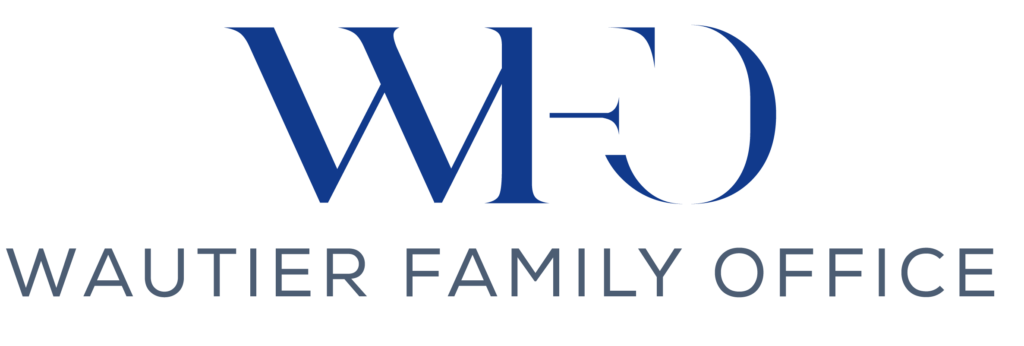How does educational inequality influence political participation and democratic representation? What are the long-term economic consequences of educational inequality for national growth and innovation? Can societies overcome educational inequality without first addressing systemic privilege and policy bias?
This blog examines how educational inequality shapes both political power and economic opportunity, revealing it as one of the most defining challenges of our time. When access to quality education is limited by wealth, geography, or social status, citizens face reduced political engagement and economic stagnation. The piece explores how educational inequality weakens democratic participation, centralizes power among elites, and fractures social cohesion, leading to widespread mistrust in institutions and diminished civic voice.
Economically, educational inequality curtails innovation, deepens poverty cycles, and limits national competitiveness. By preventing equal development of human capital, it suppresses productivity and perpetuates systemic disadvantage across generations. The blog argues that addressing educational inequality is not simply a moral necessity but an economic and political imperative. Equitable investment in education—especially for marginalized communities—can create a self-sustaining cycle of growth, opportunity, and social stability that benefits entire nations.
I am unashamedly passionate about education. It is the reason I devote so much of my most valuable resource, time, to a tertiary education institution, in the pursuit of teaching and sharpening the minds of the next generation; a task that is taking on increasing importance with each passing year.
This is hardly a unique worldview. Education has long been recognized as one of the most powerful tools for transforming individuals, communities, and nations. It shapes how people think, work, and participate in society. In an era defined by globalization, education also determines how individuals and societies engage with an increasingly interconnected world. More than simply transmitting knowledge, education builds the capacity for critical reasoning, civic responsibility, and innovation. All of these facets of individuals and society are foundational to economic growth and democratic governance.
Yet, despite this acknowledged importance, access to quality education remains deeply uneven across and within countries.
Table of Contents:
The Political Consequences of Educational Inequality
The Economic Consequences of Educational Inequality
The Political Consequences of Educational Inequality
Educational inequality is the uneven distribution of learning opportunities, resources, and outcomes. When certain groups are systematically denied access to quality education, they face diminished opportunities for employment, reduced political participation, and weakened social mobility. The result is a cycle of disadvantage that perpetuates inequality across generations.
These disparities also manifest in broader systems of governance and economic performance. Politically, educational inequality weakens democratic participation, fosters disenfranchisement, and contributes to declining trust in institutions. Economically, it undermines productivity, innovation, and equitable growth by constraining the development of human capital.
One of the most direct political effects of educational inequality is its impact on civic engagement and voter participation. Most Western democracies have voluntary voting systems. Numerous studies have demonstrated a strong correlation between educational attainment and political involvement. Individuals with higher levels of education are more likely to vote, engage in community activities, and understand the mechanisms of governance. In contrast, those with lower levels of education often face barriers not only in accessing political information but also in perceiving their role as agents of change within a democracy.
For example, research from the OECD and World Bank has shown that citizens with tertiary education are significantly more likely to participate in elections and public consultations than those with only primary or incomplete secondary education. This participation gap matters because it influences whose voices are heard in policymaking. When educational inequality prevents large segments of the population from engaging politically, democracy becomes skewed toward the preferences and priorities of the educated elite.
Moreover, education fosters civic literacy, including the understanding of political rights, institutional frameworks, and policy processes. Without this foundation, citizens may lack the knowledge necessary to hold leaders accountable or to advocate effectively for their interests.
Educational inequality also reinforces the patterns that entrench the dominance of ‘elites’ in policy-making. When access to higher education is limited to wealthier or urban populations, political power tends to concentrate among those already advantaged by social or economic privilege.
This bias can be observed in budget allocations, infrastructure priorities, and even the design of social welfare programs. For instance, education systems that favor private schooling or urban resource distribution often emerge in countries where the educated elite dominate political discourse. As a result, rural and lower-income populations remain underrepresented both in policy development and in its benefits.
Furthermore, limited educational access reduces the pipeline of future leaders from diverse backgrounds. When marginalized communities lack representation among decision-makers, the policies enacted often fail to address systemic inequities, reinforcing the same disparities that restrict access in the first place.
This lack of true representation of the voting public in the halls of power can mean that shared understandings of problems and tradeoffs are lost. When educational inequality fragments these shared experiences, it can weaken social cohesion. Disparities in education often align with other forms of inequality, including income, geography, and ethnicity, deepening societal divides and fostering mistrust between groups.
In countries with wide educational gaps, public trust in institutions such as government, media, and the judiciary tends to decline. Without shared access to information and critical thinking skills, misinformation spreads more easily, polarizing societies and undermining collective problem-solving. This fragmentation has real political consequences: citizens may retreat into echo chambers, reject evidence-based policy debates, or support populist movements that exploit grievances tied to educational and economic exclusion.
The Economic Consequences of Educational Inequality
While the political effects of educational inequality are often visible in patterns of participation and representation, its economic consequences are even more profound and enduring. Nations thrive when their citizens possess the knowledge and skills to innovate, adapt, and contribute productively to the labor market.
One of the clearest economic consequences of educational inequality is the skills gap. This refers to the mismatch between the abilities that workers possess and the skills that employers demand. In economies characterized by rapid technological change and globalization, demand has shifted toward knowledge-intensive and adaptable labor. Yet in regions where access to quality education remains limited, large segments of the population are ill-equipped to fill these roles.
Research consistently demonstrates that education has a strong causal link to earnings and economic performance. A seminal study from the University of California, Berkeley, found that individuals with higher levels of education earn between 20 and 40 percent more over their lifetimes than those with only basic schooling, controlling for other variables such as geography and family background.
Educational inequality, therefore, imposes a substantial cost. When a significant portion of the population is denied access to quality learning, nations underutilize their human capital. This underutilization creates economic inefficiency as firms struggle to find qualified employees, while millions remain underemployed or confined to low-wage, low-productivity sectors.
Zooming out to a more macroeconomic level, educational inequality weakens both national productivity and global competitiveness. Economies that fail to invest in broad-based education tend to experience slower growth and lower levels of innovation. This is because education functions as a form of economic infrastructure upon which skills, research, and technological progress are built. Without widespread access to quality education, countries struggle to take the next step to improve GDP per capita and living standards to develop industries that rely on high-skilled labor, such as advanced manufacturing, information technology, and green energy.
Cross-country analyses by the World Bank and OECD show that every additional year of average schooling can increase a nation’s long-term GDP growth rate by 0.37 percentage points. Conversely, countries with high inequality in educational attainment often face productivity bottlenecks and reduced capacity for technological adoption.
Educational inequality also affects foreign investment decisions. Multinational companies often seek locations with a skilled workforce capable of supporting complex operations. When educational standards vary sharply within a country, it creates uncertainty and limits the attractiveness of that market. Over time, this can perpetuate a vicious cycle: regions with limited educational infrastructure attract less investment, resulting in weaker job creation and further underfunding of schools.
But perhaps the most insidious consequence of educational inequality is its intergenerational persistence. When access to quality education is determined by socioeconomic status, geography, or ethnicity, inequality becomes self-reinforcing. Children born into disadvantaged households are less likely to attend well-resourced schools, receive academic support, or access tertiary education. As a result, they enter the workforce with fewer skills, lower earnings, and diminished capacity for upward mobility—perpetuating the same cycle of poverty their parents faced.
Early educational disadvantages compound over time. For example, a child who lacks access to quality early childhood education is statistically less likely to complete secondary school and far less likely to pursue tertiary study. These early gaps in learning translate directly into reduced lifetime income and weaker economic resilience, limiting the ability of families to escape poverty or accumulate wealth.
This dynamic is exacerbated by what sociologists term “opportunity hoarding.” This is the process by which privileged groups maintain their advantage by monopolizing access to high-quality schools, tutoring, and enrichment programs. Over generations, this creates entrenched educational hierarchies that mirror and reinforce class and income divisions.
The macroeconomic cost of this inequality is significant. By constraining social mobility, educational disparities reduce the diversity of talent in leadership, entrepreneurship, and innovation. Nations that fail to harness the potential of all citizens suffer not only moral loss but measurable declines in productivity and cohesion.
The Broader Systemic Cycle
Educational inequality is a structural feature of economies and political systems that, if left unaddressed, perpetuates its own existence. The relationship between education and broader development outcomes forms a powerful feedback loop in which weak educational foundations limit growth and opportunity, and sluggish economic performance, in turn, constrains public investment in education.
Economic policies that treat education as peripheral rather than central often fail to achieve inclusive prosperity. Fiscal and development strategies focused narrowly on infrastructure or industry may deliver short-term gains, but without an educated workforce, these sectors quickly encounter productivity plateaus. Over time, this neglect reinforces inequality, as those without access to quality education remain confined to low-wage or informal employment. In essence, economic models that underinvest in education inadvertently reproduce the very disparities they aim to solve.
The feedback loop is clear. Underfunded education systems produce a workforce with limited skills and innovation capacity. This constrains productivity and reduces government revenues, which in turn diminishes fiscal capacity to reinvest in education.
Moreover, treating education as a foundational investment reframes policy debates around public spending. Every improvement in literacy, numeracy, and digital competency expands the nation’s productive frontier. More importantly, it creates the conditions for social mobility and democratic resilience, ensuring that opportunity is not confined to those born into privilege.
While educational inequality affects all societies, its burden is not evenly distributed. Geography, race, gender, and socioeconomic status intersect to shape who gains access to opportunity and who is left behind. In rural or economically marginalized regions, schools often face chronic underfunding, inadequate infrastructure, and teacher shortages, producing learning outcomes far below national averages. In many countries, girls still face systemic barriers to continued education, from cultural expectations to safety and resource constraints. Likewise, racial and ethnic minorities often encounter institutional discrimination that limits both educational attainment and post-school employment prospects.
Key Takeaways
Educational inequality is far more than a matter of unequal access to classrooms or credentials. It is a determinant of political voice, economic vitality, and social cohesion. When education is unevenly distributed, so too are the tools of participation, productivity, and progress. Democracies become less representative as marginalized groups disengage from civic life, and economies underperform as talent and innovation are squandered.
Addressing educational inequality is a strategic imperative that can drive a self-reinforcing cycle of positive educational attainment and economic growth. Investing in equitable, high-quality education ensures that individuals, regardless of background, have the capacity to participate fully in political and economic life. It strengthens democracies by expanding the base of informed citizens and fuels growth by unlocking the potential of underutilized human capital.
While the specific pathways to reform will vary by nation, it is evident that high-quality education, spread as far and wide as possible across a populace, is the cornerstone of a just and prosperous society. With it, nations can build systems that are more inclusive, resilient, and capable of meeting the challenges of the modern world.




